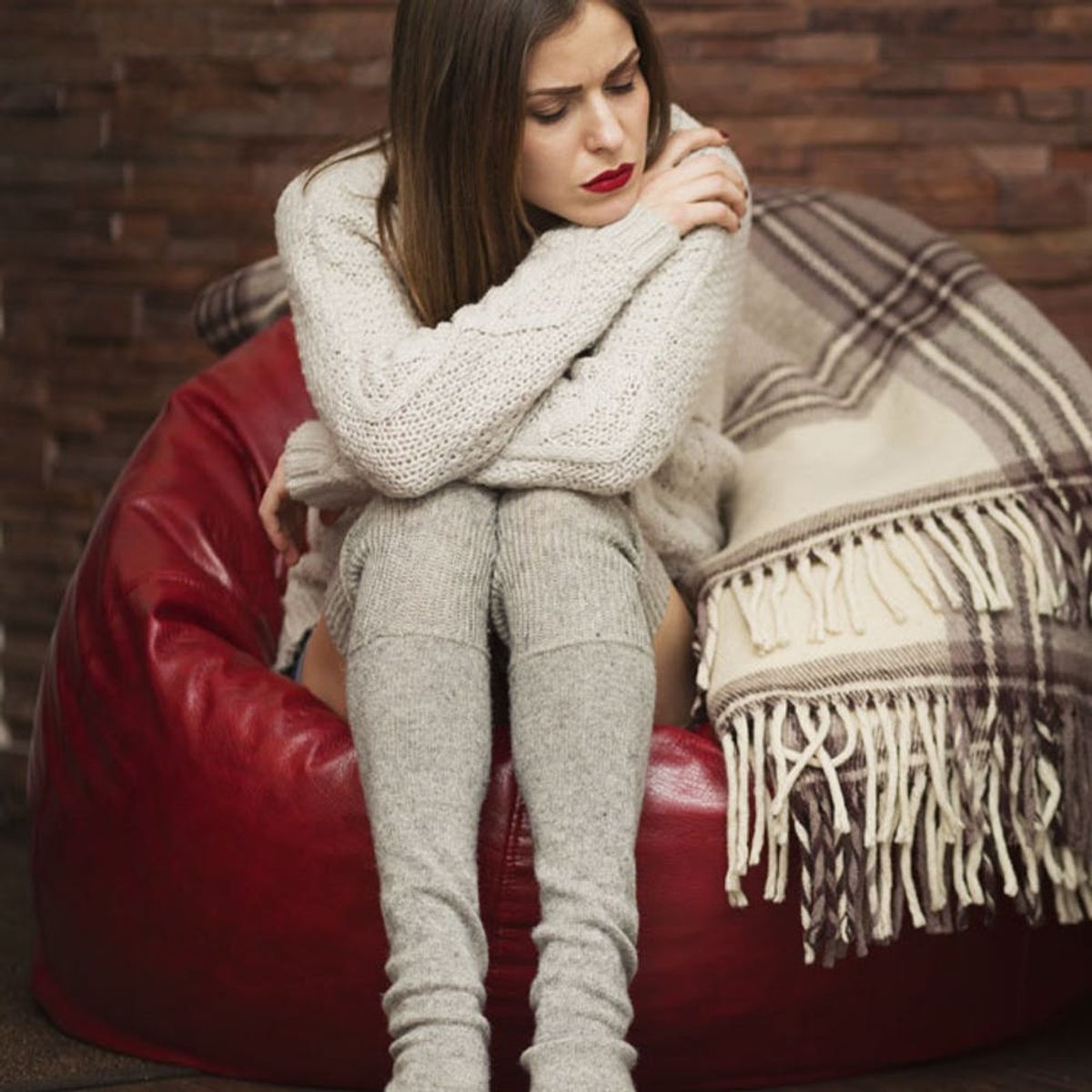Don’t be SAD. Do this.
Help Beat the Winter Blues by Doing This 1 Thing

When the temps reach their hip-creaking coldest and days are at their hibernation-inducing shortest, it’s pretty common to start feeling the winter blues. Not even celebs are immune to winter’s bleakness: In an interview with Marie Claire magazine, Miley Cyrus divulged a tidbit about how her mom wanted to combat SAD (seasonal affective disorder) with light therapy during her 12-hour-long days filming Hannah Montana. She’s not alone. More than 14 million Americans suffer from depressive mood swings during the months of September through April.
Medical professionals have historically recommended the best way to get over the winter blues is through absorption of light, be it sunlight, light therapy or light from a box. Perhaps that’s true, but research says you don’t get a whole lot out of staring at light — other than those annoying photo-bleaching tracers, of course.
However, there’s a new study out of the University of Vermont that just might have an answer to dealing with the aptly acronymed disorder, and it’s not what you’d expect. If you wanna stop feeling some kinda way, put away the boxed light and hit up someone for a little chitchat. Yes, the simple act of talking may be just what the doctor ordered.
Led by psychology professor Kelly Rohan, the study recruited 177 research subjects who were treated with six weeks of half-hour light therapy sessions or two 50-minute sessions of cognitive behavior therapy (CBT) per week for six weeks. According to the National Alliance on Mental Illness, CBT focuses on exploring relationships among a person’s thoughts, feelings and behaviors, and is highly effective in turning those frowns upside down. During the study, therapists would help subjects identify the problem/negative behavior, and then talk it out.
Two winters after the initial treatment, 46 percent of the light-therapy group found themselves once again depressed, compared to just 27 percent of the CBT group. “Light therapy is a palliative treatment, like blood pressure medication, that requires you to keep using the treatment for it to be effective,” Rohan says. “Adhering to the light therapy prescription upon waking for 30 minutes to an hour every day for up to five months in dark states can be burdensome,” she continues.
CBT, by contrast, is a preventive treatment. “Once SAD sufferers learn its basic skills, it has enduring impact, giving the person a sense of control over their symptoms,” Rohan says. So once you’ve got the process down, practice it with someone — a stranger, a loved one or even yourself. Better yet, the next time you’re holed up indoors, alone under a blanket, with a box of Oreos and Netflix’s new releases, invite someone over for a pep talk… and to share that sleeve of cookies.
Have the winter blues? Tell us about your experience and methods of dealing with the disorder by tweeting us @britandco.
(Photos by Paul Zimmerman and Jemal Countess/Getty Images)



















